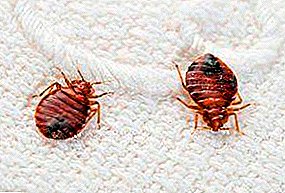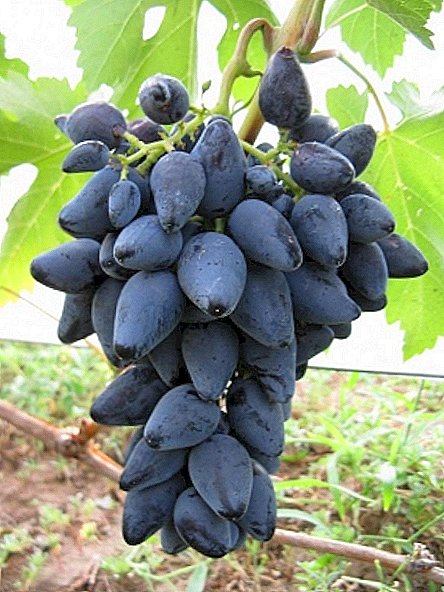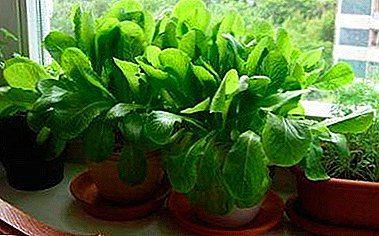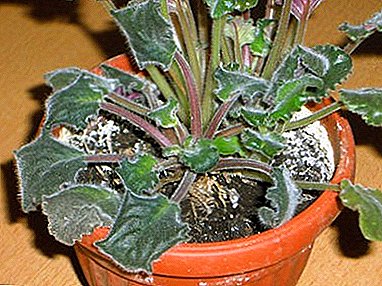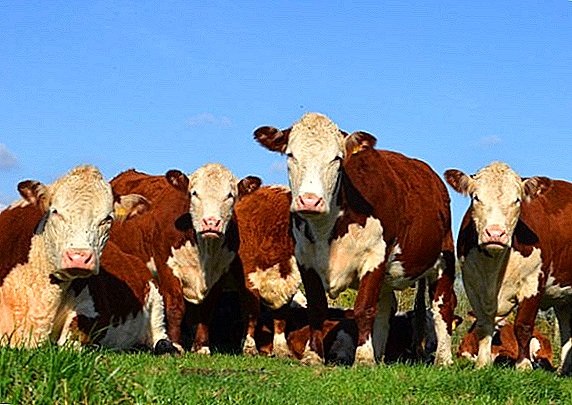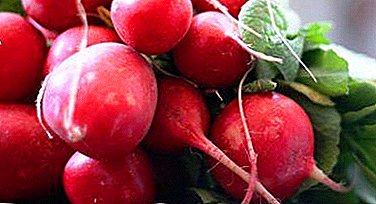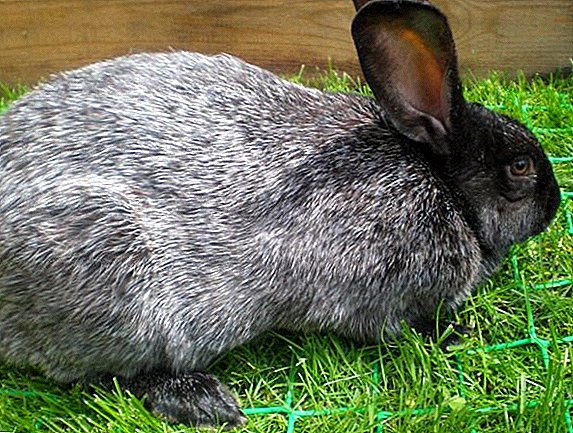 Among the huge variety of rabbit breeds, breeders especially appreciate the Silver look. Representatives of this breed are not confused with any other species. Rabbit is so popular in private farm breeding due to the unique silver-smoky fur coat and excellent dietary characteristics of meat products.
Among the huge variety of rabbit breeds, breeders especially appreciate the Silver look. Representatives of this breed are not confused with any other species. Rabbit is so popular in private farm breeding due to the unique silver-smoky fur coat and excellent dietary characteristics of meat products.
Breed description
To begin, consider the history of the origin of the breed and its constitutional features. 
Inference history
The silver variety was created in Ukraine (in the Poltava region), bred by the pure breeding method Champagne (view from the French province of Champagne). Long-term selection work (almost 25 years) was carried out under the direction of livestock specialists A. I. and I. I. Kaplevskikh. Officially, the breed was registered in 1952.
Appearance and parameters
Silver "Poltava" from Champagne features a slightly darkened silver color. Specimens have longer ears and an elongated body. Let us dwell in more detail on the external parameters of the type in question:
- rabbits have a high slaughter yield (58-60%); the average weight of adults reaches 5-6 pounds;
- the body is not very long, the average body length of full-aged individuals is 57 cm (can vary from 59 to 64 centimeters);
- little rabbits are prolific, 6-8 babies are brought in around the area;
- the body is covered with thick fur, the length of the hair is about 2.5 cm;
- fur cover is dense, with a glossy sheen; shade of silver (from light to dark tones of silver), while the undercoat, nose, ears, partly paws and tail have an almost black color;
- the animal stands on strong legs of medium length, its front legs are wide;
- tail straight, snug, without bends;
- chest broad, sometimes with a small dewlap; average chest girth - 36 cm (can vary from 34 to 37 centimeters);
- back almost straight;
- the neck is short;
- the head of the individuals is small, narrowed to the nose;
- eyes dark brown, expressive;
- ears are long, not too thin, slightly rounded.
Did you know? Building a nest for future offspring, the rabbit plucks the fur from her chest.
Advantages and disadvantages
Most of the breeders leave positive feedback on this breed. The strengths of the silvery breed are:
- high precocity, as well as excellent taste and nutritional properties of meat products;
- impressive body weight;
- high-quality (thick and dense) fur;
- unpretentiousness in food and frost resistance;
- good reproductive characteristics.
 The pros and cons of Soviet silver are well balanced. You will not find the breed significant flaws, because of which you can find it unsuitable for breeding. All farmers agreed that the disadvantages of this species are insignificant and manifest themselves in the following:
The pros and cons of Soviet silver are well balanced. You will not find the breed significant flaws, because of which you can find it unsuitable for breeding. All farmers agreed that the disadvantages of this species are insignificant and manifest themselves in the following:- poor adaptation to heat (in hot conditions, productive indicators of the breed decrease markedly - they grow worse and produce lower quality fur);
- inability to closed rabbitries (in closed conditions the fecundity of the breeding stock significantly decreases).
What to look for when buying rabbits
It is better to make a purchase not in a pet store or on the market, but in a nursery or from a breeder whom you trust. Choose animals of 3 or 4 months of age. Trace the behavior of the crumbs, it should not be too shy. The animal must be mobile, curious. The nature of the species in question is kind. If a rodent bites or behaves hostile - then he was kept in inappropriate conditions.
Important! It is better not to buy a rabbit during the molting period, so you can confuse a healthy animal with a sick one.
The body of a healthy individual must be strong, muscular and elastic to the touch. The coat of a healthy rabbit must be clean, glossy, smooth, without bald spots. There should also be no scratches and torn wounds; there should be no seals on the abdomen. The back is long, not sagging. The hind limbs should not be splayed. Carefully inspect the rodent's face.  The eyes of the animal must be brown. A different color indicates an admixture of other subspecies. In addition, the eyes should be shiny, clean. The ears of a healthy individual are even, clean, pink inside. The nose must be mobile, clean, without any discharge. Also when buying it is important to pay attention to the color of the claws, it should be dark.
The eyes of the animal must be brown. A different color indicates an admixture of other subspecies. In addition, the eyes should be shiny, clean. The ears of a healthy individual are even, clean, pink inside. The nose must be mobile, clean, without any discharge. Also when buying it is important to pay attention to the color of the claws, it should be dark.
Maintenance and care
Experienced breeders admire the endurance of this large breed. These animals are unpretentious in care and are not afraid of frost.
Read also about such meat breeds of rabbits as: Soviet chinchilla, white giant, Viennese blue rabbit, Hiccol rabbit, Rex rabbit, Butterfly, Californian rabbit, Flandre and New Zealand rabbit.
Selection and arrangement of cells
Since Soviet silver is poorly adapted to being kept in closed rabbit festivals, a shedded two-story system is ideal for this breed. In this cell should not be cramped. Experienced breeders advise it is the street content of this breed, since such conditions increase the immunity of animals.  The length of one cell must be at least 1 meter. The best materials for arranging shed cells are wood or transparent polycarbonate.
The length of one cell must be at least 1 meter. The best materials for arranging shed cells are wood or transparent polycarbonate.
Important! Since the metal is heated by the sun, it is not recommended to use this material in the arrangement of the sheds. Rabbits will be stuffy and uncomfortable.In the cages should always be fresh bedding of hay. Pre-inspect the hay so that it is free from mold. Feeders and drinkers for rabbits are used the same as for other types of farm animals, that is, standard nurseries, feeders and various types of drinkers.
Conditions of detention
Despite the fact that the silver "Poltava" are adapted to any weather conditions, the most favorable for them is a moderate continental climate. Desirable average temperatures - from + 17 ° to +23 ° C. In hotter conditions, rabbits will look for shade, therefore, installation of sheds under which they could hide from direct sunlight will not be superfluous.  In addition to heat, Poltava silver tolerates high humidity. Optimum air humidity is not higher than 70%. Shed maintenance of rabbits involves cell ventilation. However, do not make drafts - "silver" does not stand the winds.
In addition to heat, Poltava silver tolerates high humidity. Optimum air humidity is not higher than 70%. Shed maintenance of rabbits involves cell ventilation. However, do not make drafts - "silver" does not stand the winds.
Care
Caring for Soviet silver is not difficult. To carry out the cleaning you will need a special inventory: hard brushes, brooms, brooms, buckets, shovels. Inventory must also be kept clean.
Check out the best decorative and fur breeds of rabbits.
Cages and rabbitry need to be regularly (daily) cleaned from manure and accumulated residues of food. Rabbit care also includes changing litter as it gets dirty. Cell cleaning should be done at least 2-3 times a month.  Preventive disinfection of cells is carried out twice a year (autumn and spring). Bleach in the form of a 10% solution is usually used for this purpose.
Preventive disinfection of cells is carried out twice a year (autumn and spring). Bleach in the form of a 10% solution is usually used for this purpose.
Vaccination
Rabbits are susceptible to disease. To avoid problems in the future, animals need to be vaccinated, while strictly adhering to the veterinary vaccination schedule. In the first 3-4 days after purchase, it is recommended that antiparasitic treatment be carried out as a preventive measure. When the rabbit is 28 days old, they are vaccinated against myxomatosis.
Important! Vaccinations make extremely healthy rabbits. Any suspicion of an ailment is a reason for isolating an individual. A sick animal is first treated, and only then vaccinated.
A live B 82 vaccine is used. A repeat procedure is required at the age of 120 days. When the young are banging 45 days, a vaccine against VGBK is required. Used tissue hydroaluminium formolvaktsin. Vaccination is repeated at 6 months. 
Feeding and watering
Bookmark feed and water - these are activities that the breeder must carry out regularly and according to a certain schedule.
What can you feed
"Poltava" very unassuming in matters of nutrition. In the summer, their bodies need fresh greens. In winter, the animals feed on dry and green hay. They prefer spruce food. You can offer them conifers and hardwoods. In addition, the menu may contain branches of fruit trees. Juicy food animals like fresh potatoes, carrots, legumes. In the diet should include organic supplements, silage, bran, granulated combined feed. 
Than not
Rabbits are prohibited to feed:
- wet grass;
- harmful and poisonous herbs, among which are celandine, wormwood, azalea, aloe, begonia, cornflower, carnation, narcissus, fern, peony, snowdrop, tulip;
- white and red cabbage, as well as turnips, sorrel, bamboo shoots, iceberg lettuce;
- red beet;
- tomatoes;
- mushrooms;
- garlic;
- cherries, plums, avocados, figs;
- seeds, pits;
- nuts, dried apricots;
- sugar, chocolate;
- bread, biscuits, oatmeal;
- dairy and dairy products;
- soy products.

How to water
Rabbits need to have constant access to water. With a shortage of fresh water, animals begin to show aggression. Water should always be fresh, not cold (within 20 ° C). Pour water before handing out food. The drinkers themselves must be thoroughly washed.
Did you know? Rabbit heart beats at speeds from 130 to 325 beats per minute. Therefore, the statement that these animals can die of fear when a predator approaches is not a myth at all.
Breeding young stock at home
Representatives of Soviet silver reach sexual maturity by the age of 4 months, and it is at this time that one can begin to mate with them. You must have a calendar of bulls that you need to strictly follow. The case is carried out for 7-8 days (in the summer season, preferably from 6 am to 9 pm, and in the winter - with breaks in the morning and afternoon). The female is placed on the male, removing the feeders and the trough from his cage. Pregnancy will last about 26-35 days.  Consider, what should be the care of a pregnant rabbit. Feed her exclusively benign food. In this case, feed should be given at the same time. A week before the roundabout it is important not to scare the female, and it is very careful to carry out all the care manipulations. Around can last from 10 minutes to a full hour, after which you need to clean the nest. On the 18th day the youngsters go out of the nest and learn to take their own food. By the 20th day of life, the mass of the baby should be about 300 g.
Consider, what should be the care of a pregnant rabbit. Feed her exclusively benign food. In this case, feed should be given at the same time. A week before the roundabout it is important not to scare the female, and it is very careful to carry out all the care manipulations. Around can last from 10 minutes to a full hour, after which you need to clean the nest. On the 18th day the youngsters go out of the nest and learn to take their own food. By the 20th day of life, the mass of the baby should be about 300 g.
One month after the birth of young individuals, they are deposited from the mother, placed in a group cell, where they will live up to 3 months of age. Babies are fed the same food as adults. The main thing is to feed quality. As you can see, the breed of silver "Poltava" is ideal for breeding. We are sure that you will not be disappointed in these bright fluffy rodents!


